1. Apostle Islands National Lakeshore, Wisconsin
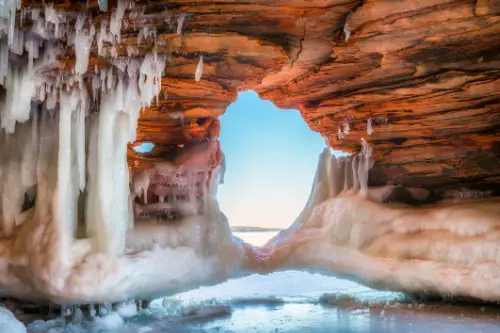
This stunning chain of 21 islands in Lake Superior is one of the Midwest’s most underrated natural wonders. Known for its sea caves, pristine beaches, and historic lighthouses, the Apostle Islands are best explored by kayak, according to the National Park Service. In winter, the caves turn into an icy wonderland, with frozen waterfalls and towering icicles creating a surreal landscape. The isolation of these islands means they remain wild and largely untouched, offering a true escape from modern life.
Access is by ferry or private boat, with camping available on several of the islands. The waters around the Apostles are home to shipwrecks, making them a popular spot for scuba diving. Wildlife lovers will appreciate the presence of bald eagles, black bears, and even rare tundra swans. If you’re looking for a remote, water-based adventure, this is the place to go.
2. Steens Mountain, Oregon

Steens Mountain is one of Oregon’s most overlooked natural wonders, a massive fault-block mountain rising over 9,700 feet above the desert. This remote region offers some of the most dramatic landscapes in the Pacific Northwest, with deep gorges, alpine lakes, and sweeping views that stretch for miles, Jen Anderson writes on the Travel Oregon website. Unlike the more famous Cascade Mountains, Steens feels untouched and wild, with few visitors. The 52-mile Steens Loop Road takes you to breathtaking viewpoints, but much of the area is best explored on foot.
Wild horses roam the vast landscape, adding to the untamed feel of the region. Hikers can trek into Kiger Gorge, a massive U-shaped valley carved by glaciers. The area is also a top spot for spotting pronghorn antelope, golden eagles, and even elusive mountain lions. If you want to experience Oregon’s high desert at its finest, Steens Mountain is a must.
3. North Cascades National Park, Washington
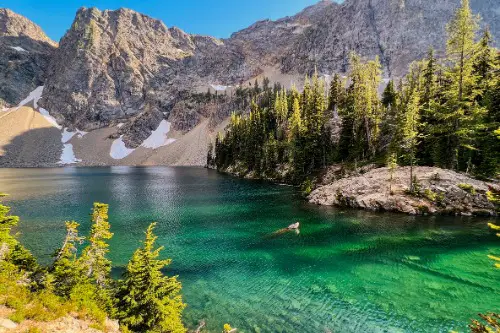
North Cascades is one of the least visited national parks in the U.S., despite being just a few hours from Seattle. The reason? It’s rugged, wild, and has no major tourist infrastructure—just towering peaks, glacial lakes, and endless forests. Often called the “American Alps,” this park is home to more than 300 glaciers, making it one of the most glaciated regions outside of Alaska. The best way to explore is by hiking, with trails like Cascade Pass offering jaw-dropping mountain views, according to the National Park Service.
Because of its remoteness, you won’t find big crowds here—just raw, untamed beauty. The park is also home to elusive wildlife like wolverines, lynxes, and grizzly bears. Canoeing on Ross Lake or backpacking into the heart of the wilderness offers a rare chance to experience true solitude. If you want to see one of the most breathtaking mountain landscapes in America, this is the place.
4. Gates of the Arctic National Park, Alaska
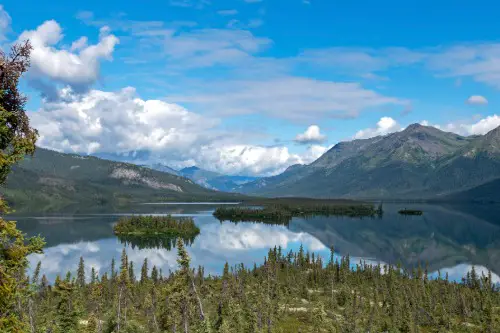
If you’re looking for true wilderness, this is it—no roads, no trails, just vast Arctic tundra and rugged peaks. Located above the Arctic Circle, this national park is one of the least visited in the U.S., making it a haven for solitude seekers. The Brooks Range dominates the landscape, offering breathtaking scenery and challenging terrain for experienced hikers, according to the National Park Service. Wildlife sightings include grizzlies, wolves, and caribou, reminding visitors that they are deep in untamed nature.
Getting here isn’t easy—you’ll need a bush plane from Fairbanks or Coldfoot, but the effort is worth it. The park is home to the indigenous Iñupiat people, who have thrived in this harsh environment for centuries. Floating down the Noatak River or camping under the midnight sun are experiences few will ever have. If you want to see what the world looked like before civilization, this is your chance.
5. Dry Tortugas National Park, Florida
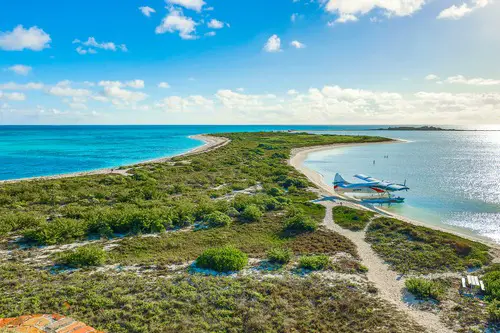
Seventy miles west of Key West, the Dry Tortugas feel like an otherworldly escape, the National Geographic Staff wrote in an article. Only accessible by boat or seaplane, these tiny islands are home to turquoise waters, coral reefs, and the historic Fort Jefferson. Snorkelers and divers will love exploring the vibrant marine life surrounding the park’s shallow waters. The isolation makes it one of the most peaceful spots in Florida, a far cry from the bustling mainland.
The fort itself, built in the 19th century, is one of the largest brick structures in the Americas. It once served as a prison during the Civil War, holding the infamous Dr. Samuel Mudd. Camping on Garden Key under a sky bursting with stars is an unforgettable experience. If you ever wanted to feel like a castaway—without the survival struggle—this is the place.
6. Big Bend National Park, Texas
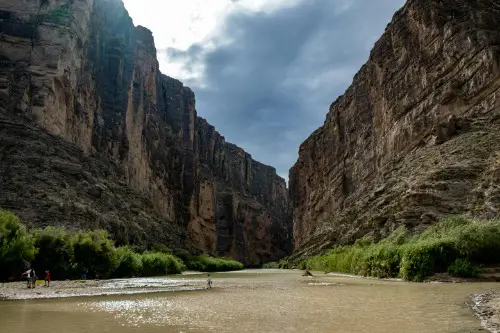
Tucked along the U.S.-Mexico border, Big Bend is a remote desert wonderland that many Americans overlook. The Chisos Mountains rise dramatically from the Chihuahuan Desert, creating a stark contrast of rugged peaks and cactus-filled valleys. The Rio Grande carves deep canyons through the landscape, making for some of the best paddling adventures in the country. At night, the park boasts one of the darkest skies in the U.S., making it a paradise for stargazers.
Hiking here is tough but rewarding, with trails like the Lost Mine Trail offering jaw-dropping views. The park’s isolation means you won’t deal with big crowds, just vast open spaces and endless horizons. Wildlife is abundant, from roadrunners and javelinas to mountain lions lurking in the shadows. If you crave adventure without distractions, Big Bend is the place to be.
7. Isle Royale National Park, Michigan
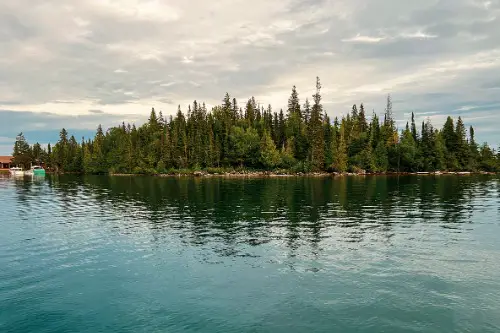
This isolated island in Lake Superior is one of the least visited national parks in the U.S., but those who make the journey never forget it. Accessible only by ferry or seaplane, Isle Royale is a haven for backpackers, paddlers, and anyone seeking solitude. The park is famous for its long-running wolf and moose study, a fascinating glimpse into predator-prey dynamics. Hiking the Greenstone Ridge Trail rewards visitors with sweeping views of the lake and dense boreal forests.
Because of its remoteness, there are no cars, roads, or permanent residents—just miles of wilderness. The island’s pristine waters are perfect for kayaking, with hidden coves and shipwrecks to explore. In the fall, the foliage bursts into brilliant reds and oranges, making for an unforgettable backdrop. If you’ve ever wanted to disappear into nature, this is your chance.
8. Chiricahua National Monument, Arizona
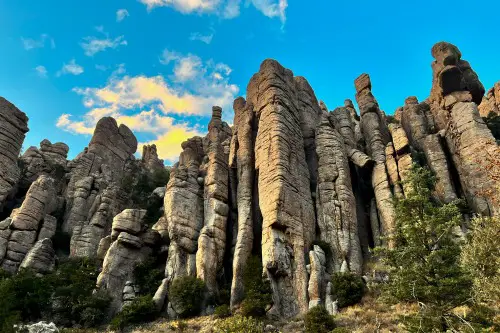
Nicknamed the “Wonderland of Rocks,” Chiricahua is a hidden gem tucked in southeastern Arizona. Towering hoodoos—rock formations sculpted by erosion—create a surreal landscape unlike anywhere else in the state. The remote location means few visitors, so you often have the trails to yourself. The Echo Canyon Loop is a must-hike, weaving through narrow rock corridors and balancing boulders.
Beyond the geology, Chiricahua has a rich history tied to the Apache people, including the legendary warrior Geronimo. The monument was once a refuge for Chiricahua Apaches, who navigated these rugged lands with ease. Today, visitors can spot coatimundis, a relative of the raccoon rarely seen elsewhere in the U.S. If you want a break from Arizona’s typical desert scenery, this place will blow your mind.
9. The Wave, Arizona
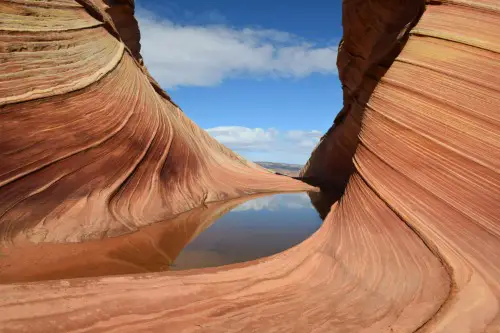
Tucked in the Vermilion Cliffs National Monument, The Wave is a surreal sandstone formation that looks straight out of a sci-fi movie. Its swirling red and orange stripes seem to move under the sunlight, creating an almost hypnotic effect. Only 64 people per day are allowed to visit, making it one of the most exclusive hikes in America. The permit lottery is tough, but those who win get to experience one of nature’s masterpieces.
The hike itself is a 6.4-mile round trip across rugged desert terrain with no marked trails. Along the way, you’ll pass otherworldly rock formations, petrified dunes, and possibly even dinosaur tracks. The extreme remoteness means preparation is key—there’s no shade, no water, and no cell service. But if you make it, standing inside The Wave is an experience you’ll never forget.
10. Katmai National Park, Alaska
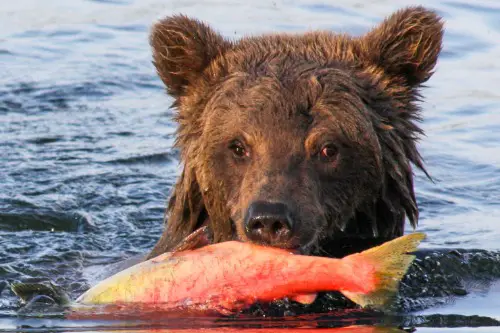
If you’ve ever seen those famous photos of bears catching salmon in waterfalls, chances are they were taken in Katmai. This remote park is home to the largest population of brown bears in the world, with over 2,000 roaming its vast wilderness. Brooks Falls is the best place to watch these giants up close as they fish for salmon, creating one of nature’s most spectacular wildlife experiences. The park also features the Valley of Ten Thousand Smokes, a surreal volcanic landscape formed by the 1912 eruption of Novarupta.
Getting to Katmai requires a flight from Anchorage to King Salmon, followed by a floatplane ride into the park. With no roads leading in, every visitor arrives by air, reinforcing its true isolation. Beyond bear watching, kayaking through Naknek Lake and hiking through the untouched tundra make for an unforgettable adventure. If you want to witness Alaska’s raw power and beauty, Katmai is a must.
11. Maze District, Canyonlands National Park, Utah
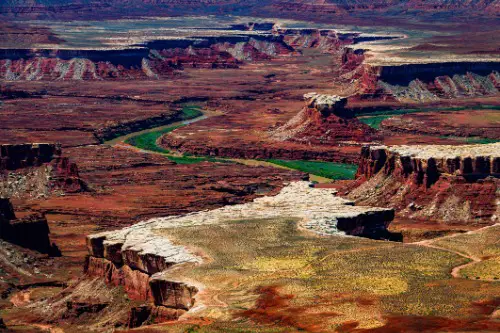
The Maze District is one of the most remote and rugged places in the entire national park system. Its name is no joke—the region is a labyrinth of twisting canyons, towering rock formations, and sheer cliffs that few people ever explore. This section of Canyonlands sees fewer than 3,000 visitors per year, making it one of the least visited places in the U.S. To reach it, you need a high-clearance 4×4 vehicle and serious navigation skills.
Backcountry camping here is a true test of survival skills, with no water sources and little shade. The reward, however, is a Mars-like landscape that feels completely untouched by time. Hikers and climbers can explore slot canyons and ancient petroglyphs left behind by Indigenous peoples thousands of years ago. If you crave true isolation and adventure, The Maze is calling.
12. Great Basin National Park, Nevada
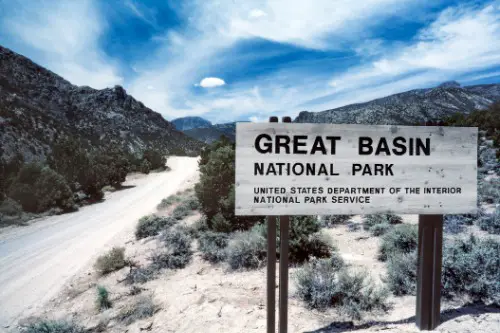
Great Basin is one of the best-kept secrets in the national park system, offering an escape into high desert solitude. The park’s crown jewel is Wheeler Peak, a 13,000-foot mountain that dominates the skyline. Below it, visitors can explore the Lehman Caves, a vast network of limestone caverns filled with stalactites and underground formations. Unlike many desert destinations, Great Basin has lush alpine forests, thanks to its high elevation.
What makes this park truly special is its night sky—it’s one of the darkest in the U.S., making it a haven for stargazers. The ancient bristlecone pines here are some of the oldest trees on Earth, with some dating back over 4,000 years. The park’s remoteness ensures that even during peak season, you’ll find solitude on its trails. If you want a mix of mountains, caves, and stars, Great Basin is a dream come true.
13. Wrangell-St. Elias National Park, Alaska

Wrangell-St. Elias is the largest national park in the U.S., covering over 13 million acres—bigger than Yellowstone, Yosemite, and Switzerland combined. Despite its size, it remains one of the least visited due to its extreme remoteness. The park is home to some of North America’s tallest peaks, massive glaciers, and abandoned mining towns frozen in time. Visitors can explore the ghost town of Kennecott, where century-old copper mines stand against a backdrop of ice-covered mountains.
The journey here involves rough dirt roads, river crossings, and long distances between services. Adventurers can hike to Root Glacier, where you can walk on ancient ice with crampons. Flightseeing tours offer breathtaking views of the St. Elias Range, where jagged peaks soar above endless tundra. If you want to experience the raw, untamed side of Alaska, this is the place.
14. Okefenokee Swamp, Georgia
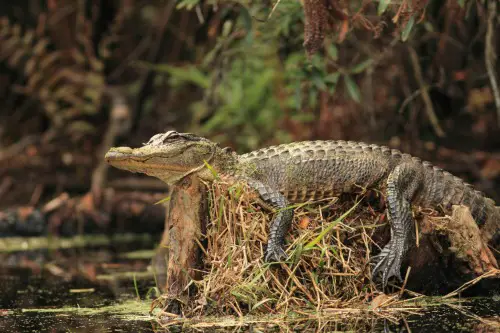
The Okefenokee Swamp is one of the largest intact freshwater ecosystems in the U.S., spanning over 400,000 acres of cypress forests, dark waters, and floating peat islands. This remote wetland is home to thousands of alligators, making it one of the best places for wildlife encounters in the Southeast. Kayaking through the swamp’s narrow channels feels like stepping back in time, with Spanish moss-draped trees and eerie stillness. The name “Okefenokee” means “Land of Trembling Earth,” a reference to the floating islands that shift beneath your feet.
The best way to explore is by paddling its extensive water trails, some of which take multiple days to complete. You’ll likely spot herons, cranes, and even endangered red-cockaded woodpeckers along the way. Overnight stays at remote platforms let you experience the swamp’s haunting beauty under a star-filled sky. If you want a wild, atmospheric adventure, this hidden gem is worth the journey.


